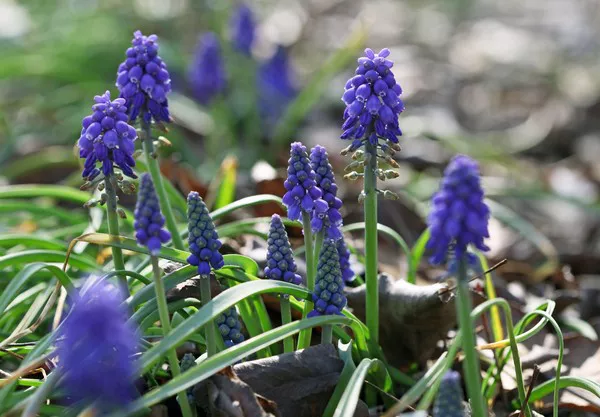In the realm of entertaining guests and creating a memorable dining experience, the inclusion of unique, seasonal ingredients holds a special place. Among these often-overlooked gems is the chive flower, capable of adding sophistication and intrigue to any meal.
Exploring the World of Chive Flowers: Understanding, Harvesting, and Preparing
Before venturing into the diverse realm of chive flower recipes, a fundamental grasp of their nature and proper harvesting is essential. Chive flowers, the edible blossoms crowning chive plants (Allium schoenoprasum), boast a vibrant purple hue and a delicate, onion-like flavor more subtle than their green stems. Blooming in late spring and early summer, these flowers present an ideal addition to the seasonal culinary repertoire.
Harvesting chive flowers requires precision:
1. Wait until the chive plant is in full bloom, with fully opened flowers displaying vibrant petals.
2. Use clean scissors or gardening shears to snip the flower stem approximately an inch below the flower head.
3. Preserve the freshly cut blossoms in a bowl of cold water until ready for use.
With a grasp of chive flower harvesting, the focus shifts to preparing them with finesse:
1. Remove individual petals by gently separating them from the flower head, discarding the central stem for visual appeal and even flavor distribution.
2. Rinse petals thoroughly in cold water to eliminate dirt or debris, patting them dry gently with a paper towel to prevent damage.
3. For those not immediately using freshly harvested chive flowers, refrigerate them for up to three days. Store them in a sealed plastic bag or container with a damp paper towel to maintain freshness.
Delectable Recipes Showcasing Chive Flowers: A Culinary Showcase
Chive flowers’ versatility shines in a myriad of dishes, with four standout recipes embodying their culinary potential:
1. Chive Flower Frittata: Elevating a classic frittata, this brunch dish involves whisking together eggs, milk, salt, and pepper. Adding a generous helping of chive flower petals, the mixture is cooked on the stovetop before finishing in the oven. Additional chive flower petals garnish the golden top for an elegant touch.
2. Chive Flower Infused Vinegar: Transforming chive flowers into a visually stunning infused vinegar, this recipe involves filling a glass jar with petals. White wine or champagne vinegar is poured in until the flowers are submerged. After two weeks of storage in a cool, dark place, strain out the petals, yielding a flavorful infusion for dressings, marinades, or grilled vegetables.
3. Chive Flower Butter: Elevate the bread and butter experience by crafting chive flower compound butter. Softened unsalted butter is combined with finely chopped chive flower petals, a pinch of salt, and a splash of lemon juice. Rolled into a log and refrigerated, the resulting butter offers a sophisticated burst of flavor on warm bread or rolls.
4. Chive Flower Tempura: A truly impressive appetizer or side dish, chive flower tempura involves whisking all-purpose flour, cornstarch, baking powder, and ice-cold club soda to create a light tempura batter. Dipping chive flowers into the batter, frying until golden and crispy, and seasoning with salt yields a delightful dish. Pair with a dipping sauce like soy sauce, ponzu, or chili-garlic sauce.
Expert Tips for Presentation and Pairing: Aesthetic and Flavorful Excellence
Mastering the art of chive flower cooking extends to presentation and pairing, with expert tips ensuring visual appeal and complementary flavors:
1. Color Contrast: Leverage the vibrant purple hue of chive flowers to create stunning color contrasts on plates. Pair chive flower dishes with ingredients boasting contrasting colors, such as bright green herbs, golden roasted vegetables, or deep red beetroot.
2. Edible Garnishes: Enhance the visual appeal of dishes by using additional chive flower petals as edible garnishes. Scatter petals over salads, soups, or pasta dishes for an elegant and flavorful finishing touch.
3. Texture Variety: Capitalize on chive flowers’ potential to introduce unexpected textures. For instance, pair the crispiness of chive flower tempura with a smooth dipping sauce or combine the creaminess of chive flower butter with the crunch of toasted bread.
4. Complementary Flavors: When selecting ingredients to accompany chive flowers, opt for flavors that complement and enhance their delicate, onion-like taste. Lemon, garlic, and mild cheeses work particularly well, as do other members of the allium family, including onions, leeks, and scallions.
In conclusion, cooking with chive flowers offers a unique opportunity to elevate culinary skills and leave a lasting impression on guests. Armed with insights into harvesting, preparation, and an array of recipes, one can showcase the versatility and subtle flavor of this underappreciated ingredient. With a focus on presentation and pairing, chive flower dishes are bound to make any gathering a memorable event. Bon appétit!


